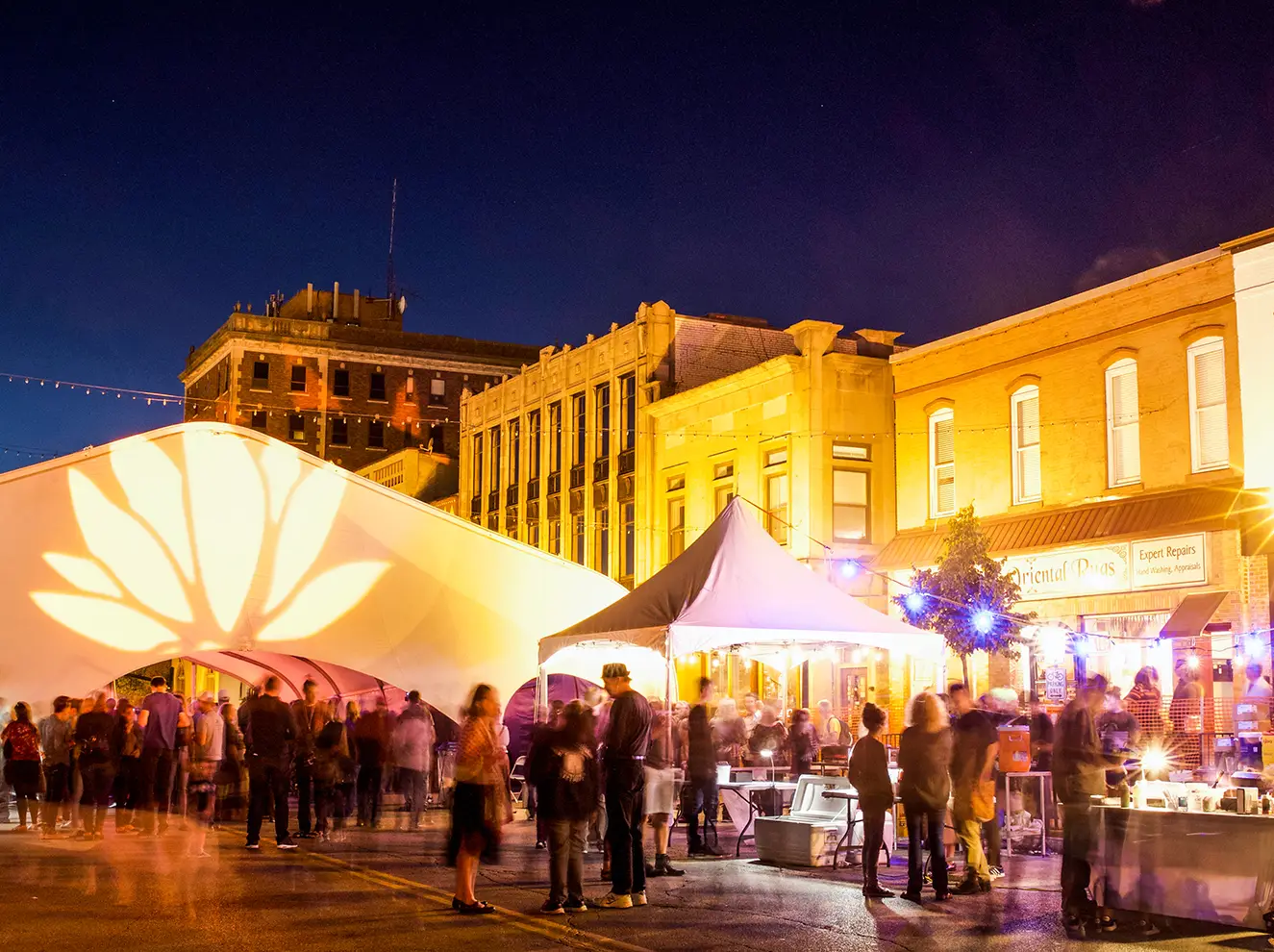Lotus Festival FAQ

How do I apply to perform at the Lotus Festival?
Please send an email to artisticdirector@lotusfest.org that includes links to your website, YouTube videos, SoundCloud site, social media pages, and other materials that will help us fully understand what you have to offer.
Is busking allowed at the Lotus Festival?
We ask the following of street performers:
- Abide by local laws regarding busking and safety.
- Do not interfere with Festival infrastructure or Festival performances.
- Respectfully abide by requests from Lotus staff, Lotus volunteers, and/or Lotus security personnel or police.
What can I bring to the Lotus Festival?
Umbrellas and lawn chairs (for Lotus in the Park), ponchos or other rain gear may be beneficial.
Please follow all safety guidelines and city ordinances.
May I take photos and videos at the Lotus Festival?
What is prohibited to bring to the Lotus Festival?
Alcohol can be consumed in restricted areas of the festival. Alcohol can be purchased in several outdoor and indoor venues.
No Glass
No Kegs
No Drones
No Fireworks
No Illegal Substances
No Laser pens or similar focused light device
No Outside alcohol (alcohol will be sold in venue)
No outside food in indoor venues
How do I become a Lotus Festival sponsor?
If you are interested in learning more about our Sponsor benefits, please send an email to development@lotusfest.org or executivedirector@lotusfest.org. Lotus Education and Arts Foundation is a nonprofit 501c(3) organization, all contributions are tax deductible.
Where should I park for the Lotus Festival?
Surface Lot spots are $1.00 per hour and lots are free after 9:00 pm daily and free on Sundays.
Lot 1 – Dunn Street and E. 4th Street (just off of Restaurant Row)
Lot 3 – E. 4th Street and Washington Street (behind the Buskirk-Chumley Theater)
Lot 5 – E. 6th Street and Lincoln Street (across from the Monroe County Public Library) Reserved spaces in Lot 5 are for permit holders only.
Lot 6 – E. 3rd Street and Washington Street (behind the Bloomington Police Department)
Public Garages are gated and monitored 24/7 at $0.50 per hour.
Sunday parking in all garages is free of charge.
4th Street Garage is located at 105 W 4th Street the entrance is located on 4th Street between Walnut Street and College Avenue. Ideal parking for Courthouse Square and Kirkwood Avenue. Overhead Clearance Height: 8’2 basement and 1st ramp-up to 2nd floor 8’0. Look for a clearance bar and signage.
Trades District Garage is located at 489 W 10th Street the new entrance will be located off 11th Street or Morton Street on Rogers Avenue. Ideal parking for Farmers’ Market, City Hall, or Dimension Mill. Overhead Clearance Height: 8’2 basement and 1st floor then starting up to the 2nd floor 8’0. Look for a clearance bar and signage.
Morton Street Garage is located at 220 N Morton the entrance is located on Morton Street between 6th Street and 7th Street. Ideal parking for the Farmers’ Market, City Hall, and the B-Line Trail. Overhead Clearance Height: 6’11.
Walnut Street Garage is located at 300 N Walnut Street the entrance is located on Walnut Street between 7th Street and 8th Street. Ideal parking for Bloomington Playwrights Project, the Courthouse Square, shops on North Walnut, etc. Overhead Clearance Height: 7’0.
Free 2 Hour On-Street Parking:
- Rogers Street from 5th to 11th
- Washington Street from 2nd to 3rd
- Lincoln Street from 3rd to Smith
Free 24/7 On-Street Parking:
- Grant Street from 2nd to Smith
- Madison Street from 2nd to 3rd
Can children attend the Lotus Festival for free?
Please be aware, night-time Festival events are not designed for small children. The Festival offers 5+ hours of free daytime programming at Lotus in the Park, on Saturday. Parents who choose to bring infants/toddlers should know that outdoor venues (and indoor venues like the Buskirk-Chumley Theater) may have loud music and may be crowded; there is also limited capacity for moving strollers around, limited access to bathrooms with changing stations, etc.
